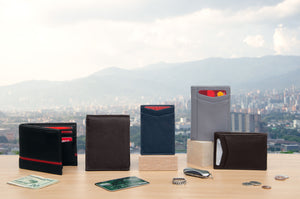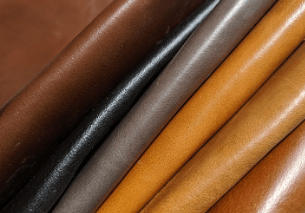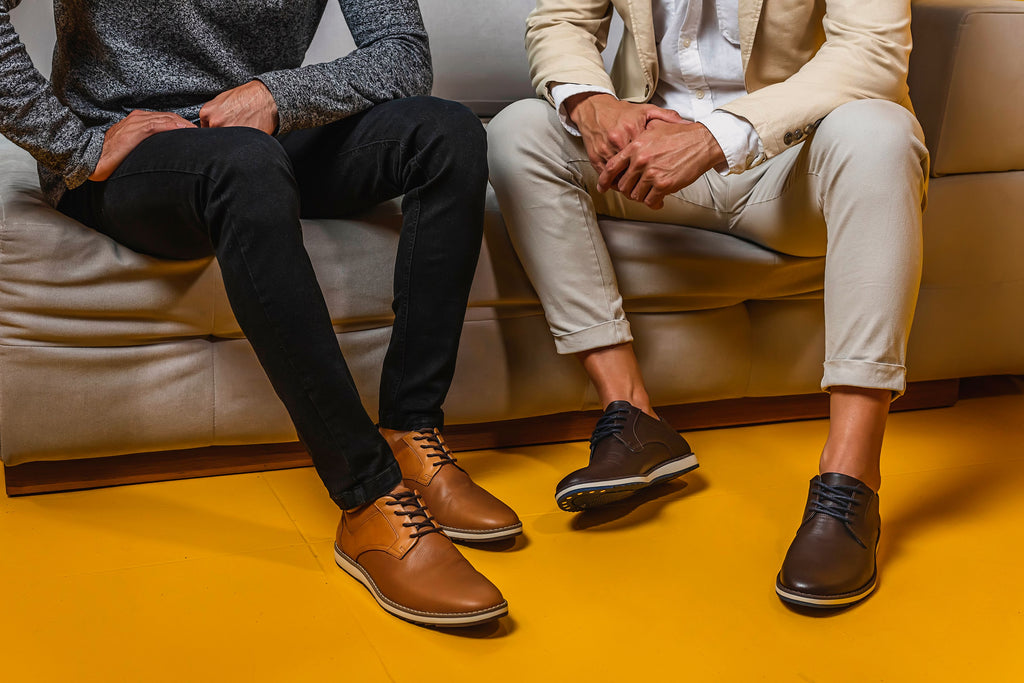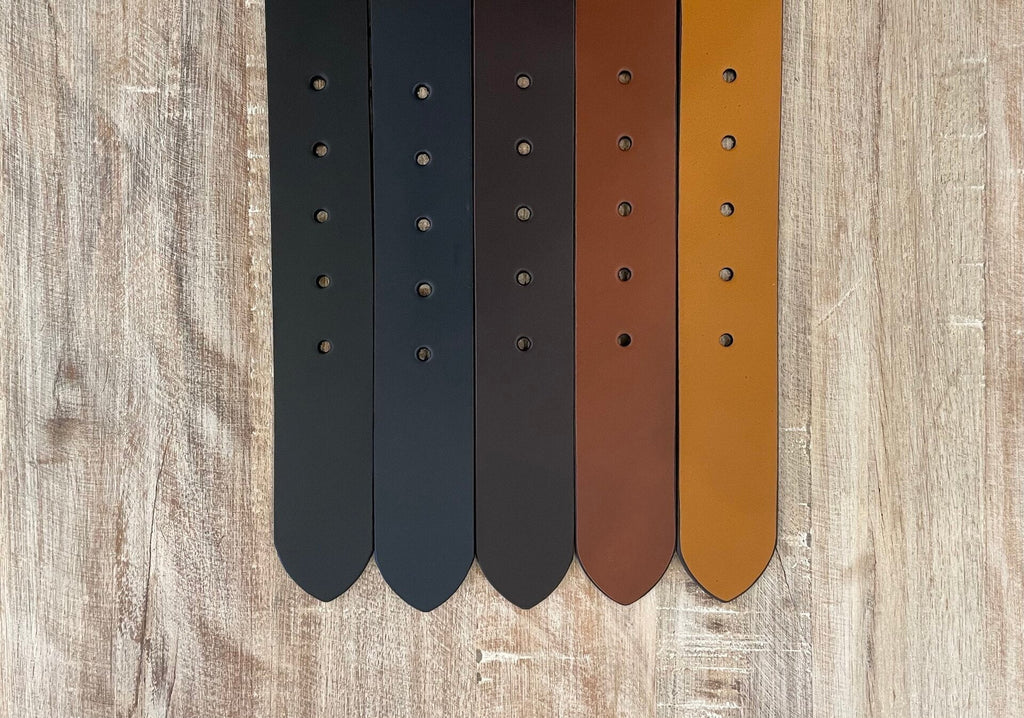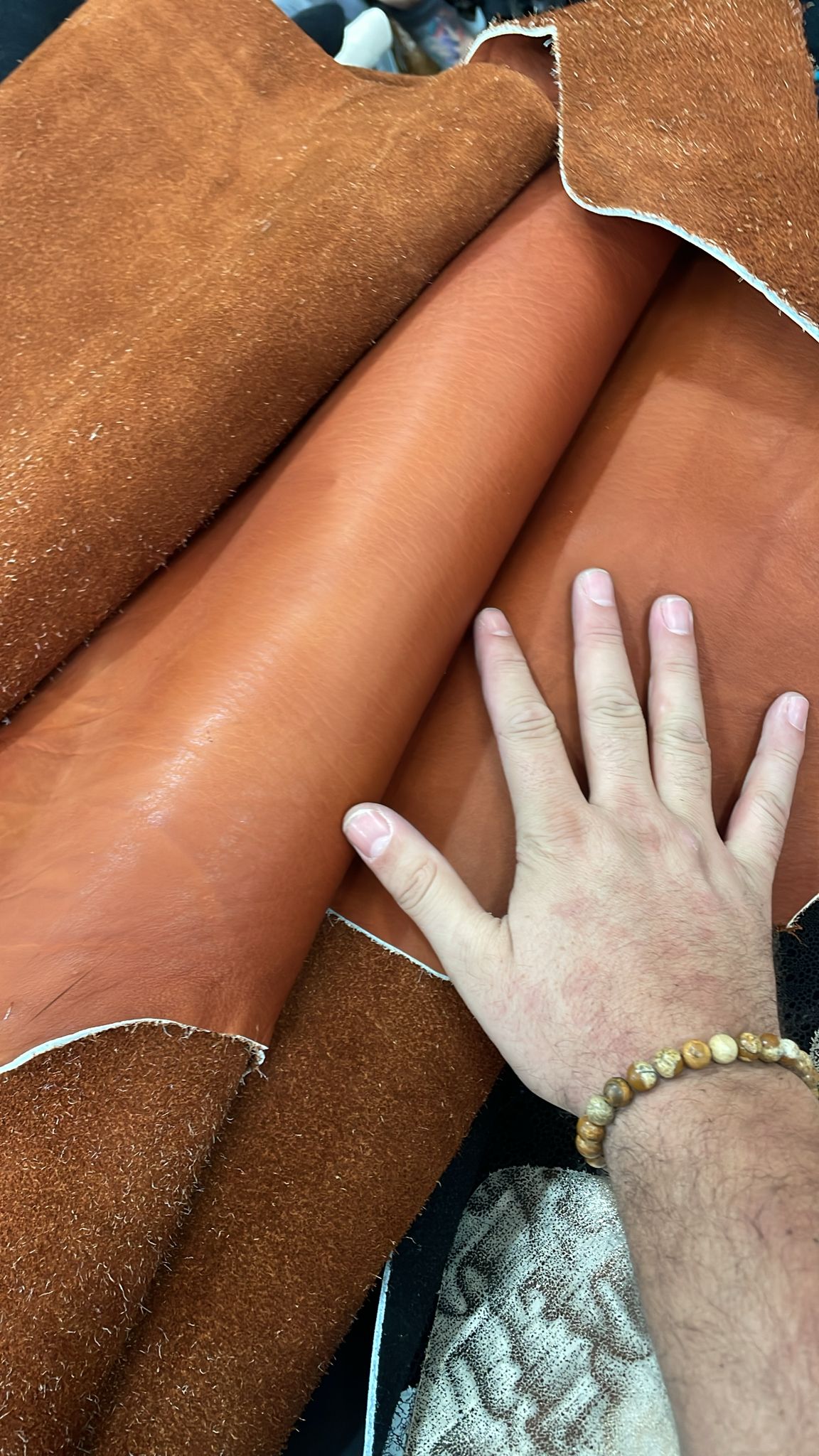
Top Grain Leather vs Full Grain Leather
Whether you’re shopping for a sleek wallet, a sturdy belt, or a luxurious sofa, you must understand the differences in the various types of leather. Leather quality determines the product's look & feel, durability, and how it ages over time.
If you’re looking for something that can stand the test of time, you’re probably considering top-grain or full-grain leather. In this article, we’re going to take a look at both to help you decide which is best for you.
The Short Answer: What’s the Difference?
Full-grain leather, which includes the entire grain layer, is the highest-quality leather available. Depending on if it comes with natural scars, markings or no imperfections will determine the final price. It is known for its durability when proper leather care is applied, and its ability to develop a rich patina over time.
Top-grain leather, while still high quality and far better than genuine leather, bonded leather, and faux leather, is thinner and has had its surface sanded to create a more uniform appearance. It doesn't age with a patina and to be as durable as full-grain leather it's important the leather is treated with the proper finish.
Ultimately, full-grain leather is closest to the hide's natural state and will age with a patina. Top-grain leather is a good choice for those who want a smoother and more uniform look, and in some cases more budget friendly.
Understanding Leather Quality
To appreciate the differences between top-grain and full-grain leather, we need to take a closer look at what each term means and the overall impact of these grades on product quality.
Full-Grain Leather
Full-grain leather refers to the highest leather quality available. This grade uses the entire thickness of the hide, including the outermost skin layer known as the “grain.” It is not sanded or buffed, which preserves all the natural imperfections and the toughest fibers of the hide, resulting in a material that is extremely durable and capable of developing a desirable patina over time. Full-grain leather is often celebrated for its authenticity and ability to beautify with age - it darkens and becomes shinier with use, enhancing its aesthetic appeal while maintaining its strength.
Top-Grain Leather
Top-grain leather is the second-highest grade of leather and is slightly below full-grain when it comes to quality and durability. In top-grain leather, the top layer of the hide is sanded down to remove imperfections, making it thinner and more pliable than full grain. In many cases, top grain leather goods cost less.
However, top grain does not always mean cheaper because making the leather waterproof or flame resistant enhances it's functionality. Some luxury and designer leather goods prefer top grain leather because of their brands unique patterns. This process sometimes involves a finishing coat, which adds a smooth, uniform appearance but prevents the leather from developing a patina.
Key Distinctions
Here are the crucial differences that set full-grain and top-grain leather apart:
- Grain Presence: Full-grain leather retains the complete grain, allowing it to exhibit the strongest fibers and the natural surface of the hide, which includes some of the most genuine textures and markings. Top-grain leather, although it still is made from high-quality skin, has its surface slightly sanded, which diminishes its natural look and strength.
- Surface Treatment: The natural imperfections of full-grain leather are embraced and showcased, enhancing its overall character and uniqueness. In contrast, top-grain leather has a more consistent finish due to the surface treatments it undergoes. This surface treatment makes top-grain leather less susceptible to stains, but prevents it from developing a natural patina over time.
Top-Grain Leather vs. Full-Grain Leather: A Closer Look
Let’s take a closer look at full-grain and top-grain’s durability, aesthetics, and maintenance requirements.
Durability and Longevity
Full-grain leather is renowned for its exceptional durability. This type of leather includes the tough outer layer of the hide, which is the most durable part. It’s also less processed, so it retains the natural toughness and the dense fibers of the skin. It is capable of withstanding heavy use and harsh environments, making it ideal for high-quality furniture, footwear, and leather goods that are meant to last for decades.
Top-grain leather, while still durable, is slightly weaker than full grain leather due to the sanding process it undergoes. This process makes the leather thinner and more pliable, which might be preferable for certain fashion items and accessories that require a softer texture, but it does compromise the leather's natural strength. Over time, top-grain leather may also show wear more quickly than full-grain leather, especially under constant stress.
Aesthetic Qualities
- Full-grain leather is preferred for products where a natural look is desired. It showcases the hide's original markings and develops a rich patina over time—a glossy, weathered finish. This patina is highly sought after, particularly in antique or vintage-style items, as it is unique to each piece of leather and cannot be replicated artificially.
- Top-grain leather has a more consistent and flawless appearance due to the sanding and finishing processes it undergoes. It is typically less susceptible to stains and blemishes, which can be advantageous for items that require a more uniform look, such as luxury handbags or sleek jackets. However, this type of leather does not develop a patina, which may be a drawback for those who appreciate the aged quality of their leather items.
Maintenance and Care
- Full-grain leather requires conditioning and occasional waterproofing to maintain its durability and appearance. Your leather care products should be chosen carefully to preserve the leather’s natural oils and finish.
- Top-grain leather is generally easier to maintain due to its protective finish. It can be wiped clean with a damp cloth and is more resistant to stains and spills. However, it still benefits from regular conditioning to keep the leather supple and prevent peeling or cracking.
How to Choose the Right Leather for You
- Full-grain leather is best suited for products that are intended for heavy-duty use or where the buyer appreciates an authentic, luxurious appearance that improves with age. This includes high-quality furniture, durable footwear, and premium leather accessories that could last a lifetime.
- Top-grain leather is appropriate for high-end fashion products, certain types of shoes, and corporate uses where a uniform, flawless appearance is more crucial than extreme durability.
- Full-grain leather products are generally more expensive due to their superior durability and the costly production processes they undergo. However, the investment is often justified by their longevity and their unique patina.
- Top-grain leather is sometimes more budget-friendly and could be a practical choice for those who need leather for style rather than lifespan.
- If you value a patina and a piece that tells a story through its natural aging process, full-grain leather is your go-to option.
- If you prefer a consistently sleek and pristine look without the changes that come with age, top-grain leather might be the better choice.
Tips for Buying Leather
- Verification: Always check product labels to ensure the type of leather used. If shopping online or in-store, do not hesitate to ask the seller directly about the leather grade.
- Touch and Feel: Feeling the leather can help determine its quality. Full-grain leather will feel sturdy and may show natural imperfections, while top-grain leather will feel smoother and more uniform.
- Warranties and Policies: Especially when investing in expensive full-grain leather goods, look for warranties that protect your purchase and offer some recourse in case of defects.
Final Thoughts on Full-Grain and Top-Grain Leather
For lovers of leather that ages gracefully, full-grain leather is undeniably the best choice. Its unparalleled durability and unique patina make it a superior investment for those who appreciate quality and timeless styles that last for decades. On the other hand, top-grain leather is a better choice for those who want a smoother and more uniform look, and in some cases more budget friendly.
- Choosing a selection results in a full page refresh.
- Press the space key then arrow keys to make a selection.


